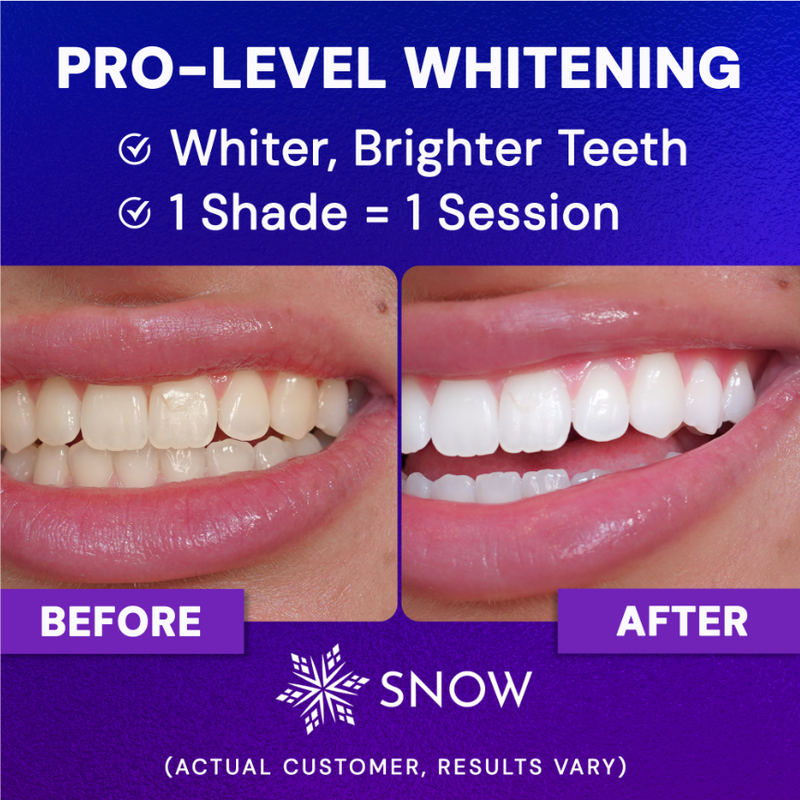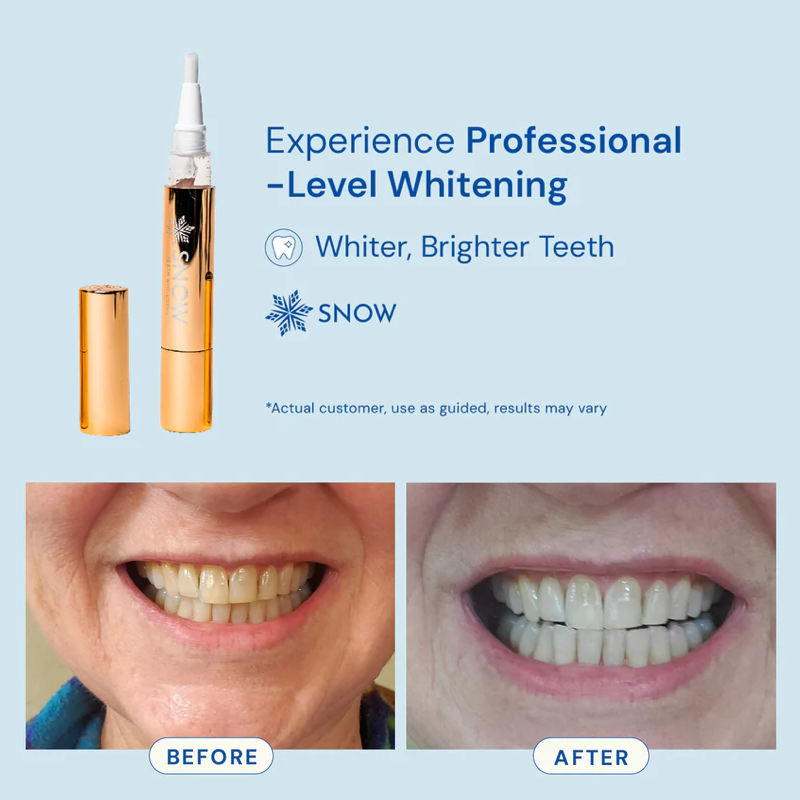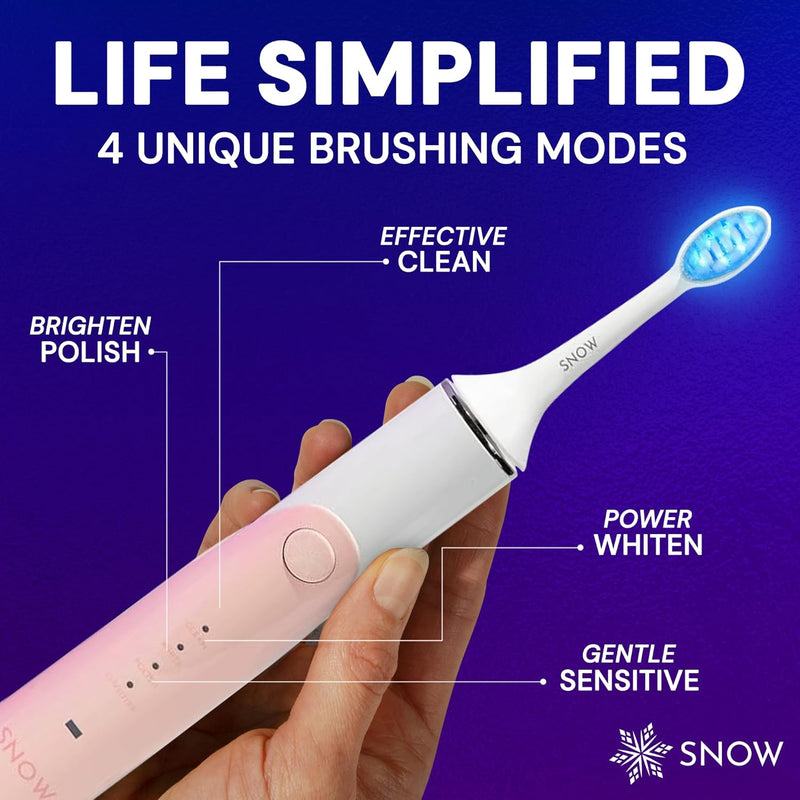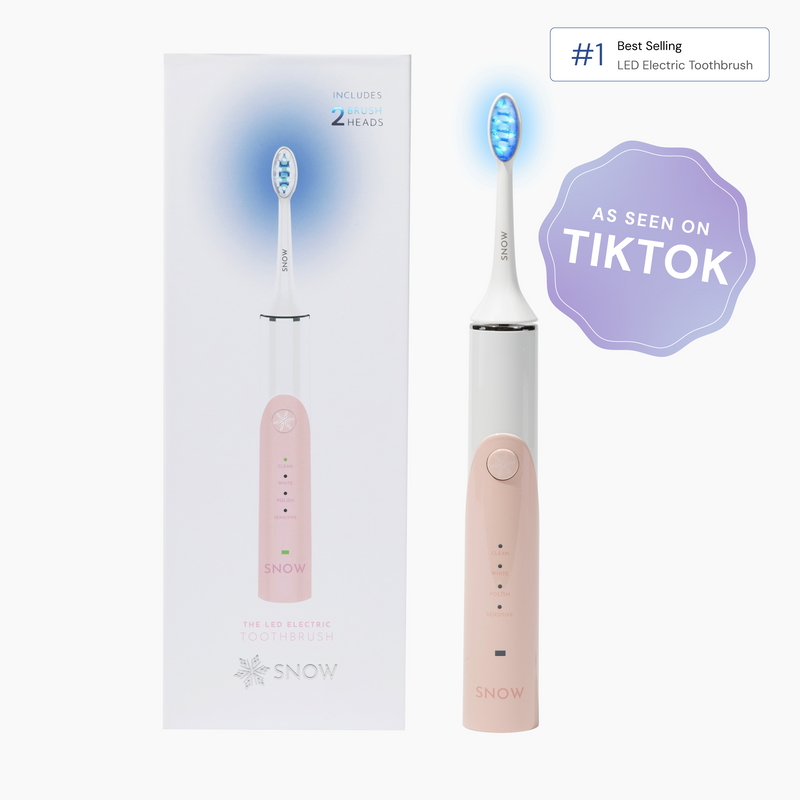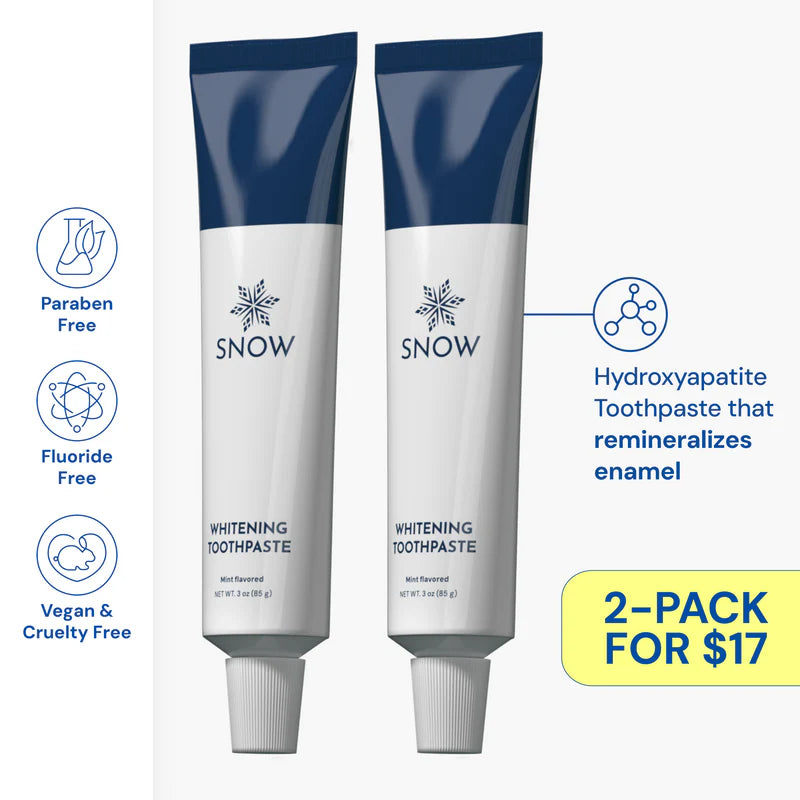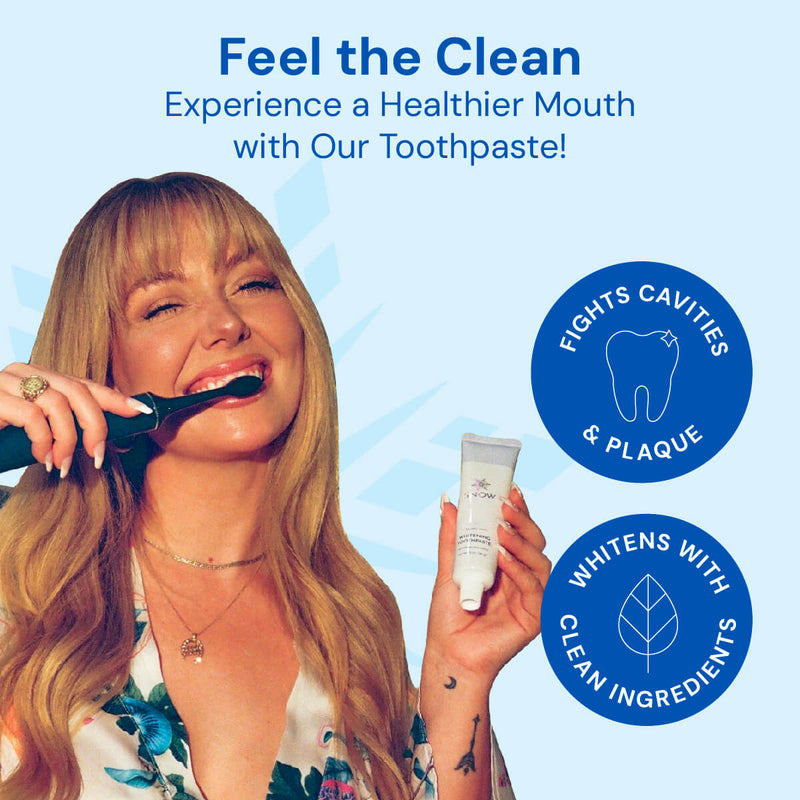Teeth stains come in various colors, the most common of which are yellow or brown. After ingesting certain meals and beverages, it is typical to have discolored teeth. Brushing your teeth is usually sufficient to eliminate the look of tooth stains, so they will likely disappear during your routine cleaning and oral hygiene program. Brushing and flossing are effective preventative measures.
However, discolored teeth might be caused by anything else within the mouth or the body. When anything comes into touch with your teeth and generates a stain, this is referred to as an extrinsic tooth stain; when it is created by something else internally, it is referred to as an intrinsic tooth stain.
TOOTH DISCOLORATION | TYPES OF STAINS
Tooth discoloration can occur due to surface stains, changes in your tooth substance, or a mix of the two. Dentists have recognized three significant types of tooth discoloration:
EXTRINSIC TEETH STAINS
Extrinsic tooth discoloration is on the tooth's surface. It happens when stain particles, such as colored residue from food or drink like red wine, accumulate in the protein layer that covers the tooth enamel to stain teeth. Extrinsic teeth stains are often induced by chewing tobacco or smoking, or frequently consuming coffee, tea, red wine, or cola beverages. This sort of tooth discoloration responds well to regular oral hygiene such as dental cleaning, teeth whitening products, and toothpaste brushing to whiten teeth.
INTRINSIC TOOTH STAINS
Intrinsic tooth stains are those that occur beneath the surface of the tooth. For example, excessive fluoride consumption may affect the development of teeth in children and cause discoloration in tooth structure. It has also been linked to hypertension, particularly in youngsters. An inherent tooth stain is more difficult to remove, although possible. Intrinsic stains may necessitate bleaching using professional or at-home chemical teeth-whitening treatments like Magic Whitening Strips or other over-the-counter products and dental professional services.
TEETH STAINS CAUSED BY AGE
Age-related stains are a combination of intrinsic stains and extrinsic stains. Tooth discoloration happens with age because dentin, the primary tissue of your teeth, naturally causes yellow teeth with age. The enamel thins with aging teeth, enabling the dentin to shine through. Most adults' teeth will darken with age due to intrinsic factors such as certain meals, beverages, and cigarettes and extrinsic causes such as the effects of certain foods, drinks, and smoke.
WHAT CAUSES TEETH TO DISCOLOR OR DARKEN?
Whiter teeth and a beautiful smile are on almost everyone's wish list. Your discolored teeth may be from a variety of causes. Some factors beyond our control, like age or childhood injuries, might disrupt our teeth' enamel formation. That is why it is critical to discuss any plans for teeth whitening with your dentist. They can inform you whether your teeth staining is just staining caused by your lifestyle factors, such as excessive coffee and red wine consumption, or whether it is a concern for dental health.
While whitening is often done for aesthetic reasons, your dentist may advise you on the best treatment choices for the type of teeth discoloration. The good part is that we can reverse and prevent tooth discoloration in many situations. That makes gaining a white, healthy smile desirable.
TOOTH STAINS INDUCED BY BAD HABITS:
Coffee, soft drinks, tea, wines, and various starchy meals such as potatoes, pasta, and other common tooth-staining culprits can contribute to staining. Also, tobacco use can discolor teeth, whether smoking or chewing.
TOOTH DISCOLORATION IS CAUSED BY SEVERAL FACTORS:
-
Poor dental hygiene: Failure to clean your teeth can accumulate plaque and food stains. Skipping regular dental cleanings can also lead to teeth stains.
-
Illness: Diseases that interfere with the normal development of dental enamel formation and dentin (the natural yellow color substance sensitive layer underneath the enamel) can cause tooth discoloration. Some medical treatments, such as head radiation or chemotherapy, can discolor teeth and cause tooth decay. Some illnesses in pregnant women might also impair your baby's enamel growth and darken its teeth.
-
Medications: Some medicines darken children's teeth. Doxycycline and tetracycline medications can affect enamel development in children under eight. Chlorhexidine and cetylpyridinium chloride-containing mouthwashes can also discolor teeth. Antihistamines, antipsychotic medicines, and antihypertensive pharmaceuticals can all induce tooth discoloration, too.
-
Dental materials: Some restorations or professional applications, particularly those containing silver sulfide, might give you gray-black tint teeth stain.
-
Getting older: Aging causes the outer layer of your tooth enamel to wear away, revealing the yellow dentin beneath. This tooth dentin also expands with age, reducing the pulp size, known as tooth pulp necrosis. The tooth's translucency decreases, making it appear darker.
-
Genetics: Thicker and brighter enamel is inherited in families.
-
Fluoride: Fluorosis can be caused by too much fluoride during tooth development from environmental sources or excessive usage that’s swallowed (fluoride treatments, rinses, toothpaste).
-
Trauma: Children might be smacked in the mouth during sports. If they are under eight, the injury might disrupt enamel production. Trauma can also darken adult teeth when an impact causes blood flow to the tooth to decline or the nerve to die.
WHAT CAN YOU DO TO REMOVE TEETH STAINS?
Several whitening products and treatments are available to whiten your teeth and remove teeth stains.
Teeth whitening options are broadly classified into three types. They are as follows:
Treatment in the office: When whitening your teeth, your dentist will often use more hydrogen peroxide than at-home alternatives. In-office therapy is more effective and lasts longer than other approaches.
At-home treatments: Some dentists can create personalized trays for you to use at home on your teeth. You'll fill the tray with gel and wear it on your teeth for up to an hour daily or as directed by your dentist. You may wear the trays for a few weeks to see the effects.
Over-the-counter medications: Whitening toothpaste and strips may successfully remove surface stains. However, they are significantly less efficient at eliminating intrinsic stains inside your teeth.
Before using any teeth whitening solution, consult your dentist to guarantee its safety. Some products have the potential to cause dental sensitivity or gum inflammation.
Additionally, schedule frequent teeth cleanings with your dentist. Stains and spots may typically be reduced with regular examinations and cleanings.
CAN YOU WHITEN DENTAL RESTORATIONS LIKE CROWNS OR VENEERS?
It's also vital to realize that dental restorations, such as bonding, crowns, veneers, bridges, dentures, and implants, can’t be whitened because they're constructed of man-made materials, most often porcelain.
WHITENING AT HOME
Whitening products: Extrinsic stains are best treated using simpler at-home whitening products by companies like Snow. If the product contains hydrogen peroxide or carbamide peroxide, it may be effective on age-related or intrinsic tooth stain needs. Just keep in mind that some components may cause tooth sensitivity.
Furthermore, some items paired with an LED light may be more effective.
Whitening toothpaste and mouthwash: Brush your teeth twice daily and use mouthwash daily for best results in removing teeth stains. As a result, employing these whitening treatments makes it simple to erase stains.
Your teeth should progressively get whiter as the products remove the teeth stain bit by bit, day by day.
Some toothpaste has a potent whitening agent that may remove deeply embedded stains. Other toothpaste just removes superficial stains.
Use a faster-acting teeth-whitening solution to remove stains. It would help if you used whitening toothpaste and mouthwash to keep your smile bright.
Dental tray and gels: Because the gel contains more peroxide than whitening toothpaste, you'll need to use a tray, which is usually included with the gel.
The trays assist in keeping the gel just in touch with your teeth and not the rest of your mouth.
Custom trays are often more effective and better at protecting your gums from irritation. Still, they can be significantly more expensive than over-the-counter alternatives.
Teeth whitening strips: This at-home approach employs whitening gel, but it is pre-applied to strips for convenient application without a tray.
Whitening strips can induce sensitivity if they include a high concentration of hydrogen peroxide or carbamide peroxide.
Whitening strips are an over-the-counter treatment that must be worn with caution. Follow the packaging guidelines and avoid applying the strips over your gumline since the gel may irritate the gum tissue.
Pencil whitener: A whitening pen is a fantastic whitening solution for persons on the go because it fits in handbags, wallets, and backpacks.
Applying a tiny layer of whitening gel from the pen to your teeth is quick and straightforward.
You have greater control over where the gel goes with a pen than whitening strips.
However, the bleaching ingredients in the gel aren't as potent in pen. Whatever the case, the convenience of a whitening pen is critical.
PROFESSIONAL BLEACHING:
Professional whitening is done in a dental office by a professional who uses high-quality whitening materials and treatments to accelerate the whitening process. The dentist will often apply a hydrogen peroxide compound, and some applications may need heat and a specific light to speed the bleaching. Other professional formulas will have a greater concentration of whitener, occasionally with desensitizer, and a form of a special tray for improved whitener adherence. With a qualified dentist, the treatment carries very little risk.
A dental bonding process involves your dentist applying a resin to the tooth and hardening it using a specific curing light. This light then bonds the resin to the tooth, improving its color.
Dental crowns are used to preserve, repair, and heal damaged teeth, as well as to whiten your teeth. Your dentist can match the color of a crown to the color of your other teeth.
Dental veneers are custom-fit porcelain shells to cover the tooth's front surface and improve the color and form of your smile. They're small and delicate, roughly the size of a fingernail.
When should you go to the dentist?
If you detect a change in the color of your teeth that does not improve with whitening products, you should consult your dentist.
Suppose the staining appears to be an intrinsic tooth stain, and no over-the-counter whitening agents can remove it. In that case, it could be more serious, such as a cavity or demineralizing enamel.
If you have one discolored tooth, it might be due to a cavity or an injury to the tooth's interior. The sooner your dentist addresses an underlying problem, the better the outcome is likely to be.
See your dentist twice a year for regular checkups to maintain healthy teeth. Problems are frequently detected during these consultations. Early treatment can help avoid the situation from getting more complex.
HOW MIGHT DISCOLORATION BE AVOIDED?
After consuming dark-colored meals, take care of your teeth. For example, if you're going to ingest pigmented food or drinks, brush and floss right after. If that isn't an option, drinking or swishing with water will help eliminate at least some of the particles that might discolor your teeth.
Brush your teeth at least three times a day, floss daily, and use a water flosser, whitening toothpaste, or mouth rinse. Mouth rinses and water flossers are excellent options for minimizing those difficult-to-remove stains between the teeth.
If you smoke or chew tobacco, speak with your doctor about a smoking cessation program. It also helps if you avoid meals and beverages that might discolor your teeth. If that's difficult, have a toothbrush on hand so you may be proactive in keeping your teeth free of stain-causing debris.
Frequently Asked Questions
Why are my teeth so discolored?
Coffee, tea, dark sodas, red wine, and even some fruits and vegetables have been linked to stained teeth. Tobacco: Both smoking and chewing tobacco can cause stained teeth. Poor dental hygiene, such as insufficient brushing or flossing, can also result in tooth discoloration.
What causes tooth staining?
Poor dental hygiene. Forgetting to clean and floss your teeth can lead to the accumulation of plaque and food stains. Skipping professional dental cleanings can also lead to stains.
Can stained teeth be whitened?
A home tooth-whitening kit containing carbamide peroxide and/or hydrogen peroxide, a whitening agent that may remove both deep and surface stains and alters the color of your natural teeth is used for whitening. A tooth-bleaching kit can assist if you have coffee, smoking and other stains on your teeth. Some kits need you to apply a peroxide-based gel to the surface of your teeth.
Are stains on your teeth permanent?
Often times stains are not permanent unless the patient has a unique condition or a dental injury. Stains may typically be removed with frequent dental cleanings or by brushing your teeth with whitening toothpaste. However, the stains return if plaque builds up again or if you continue pursue habits that discolored your teeth in the first place.













































